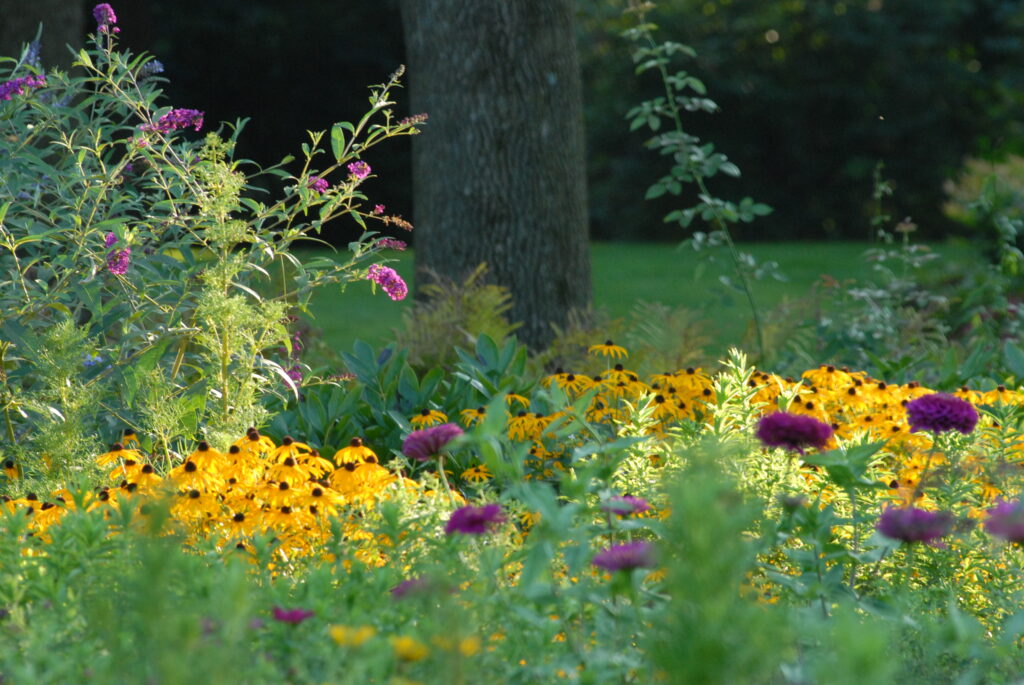
One of the Last Prairie Style Landscapes
In the early 20th century, Americans continued to value the idea of country life. This included a growing focus on leisure activities and self-sustainability. Embracing the Country Place Movement, the Douglases expanded the property from 10 to 33 acres to provide room for leisure activities and agriculture. They made several improvements to the landscape along with a design overseen by influential Prairie Style landscape gardener, Ossian Cole (O.C.) Simonds.
The early 20th century style drew its inspiration from the natural settings of the Midwest and influenced the work of several architects and landscape architects, such as Frank Lloyd Wright and Jens Jensen. This design was based on principles of conserving the natural features of the land, restoring local plantings, and reflecting the natural topography of the region, specifically the horizontal expanse of the prairie. Simonds’ influence can be seen in the “front yard,” the addition of wooded areas and a pond, several “outdoor rooms” and specialty gardens.
Today, the estate remains a rare example of a Prairie style landscape, a Simonds’ design, and of a Country Estate.
A cultural landscape steeped in history requires extensive resources for on-going maintenance and care. Help us preserve this living landmark. Donate today.
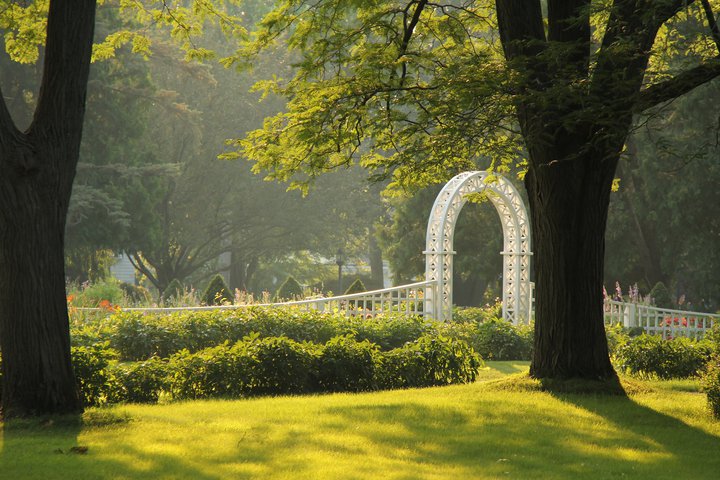
Specialty Gardens
The Brucemore estate features three gardens that reflect landscape architect O.C. Simonds’ concept of “outdoor rooms” and specialty spaces. Designed in 1910 by Irene Douglas and Helen Agnes DuPuy, the Formal Garden features perennial beds with geometric borders. Located nearby, the Night Garden features light colored plantings to reflect the moonlight. The Cutting Garden, located in the Servants’ part of the estate, allowed the Douglas family to grow vegetables and flowers to use on the estate or to give away. Today, the gardens transform seasonally to offer changing views.
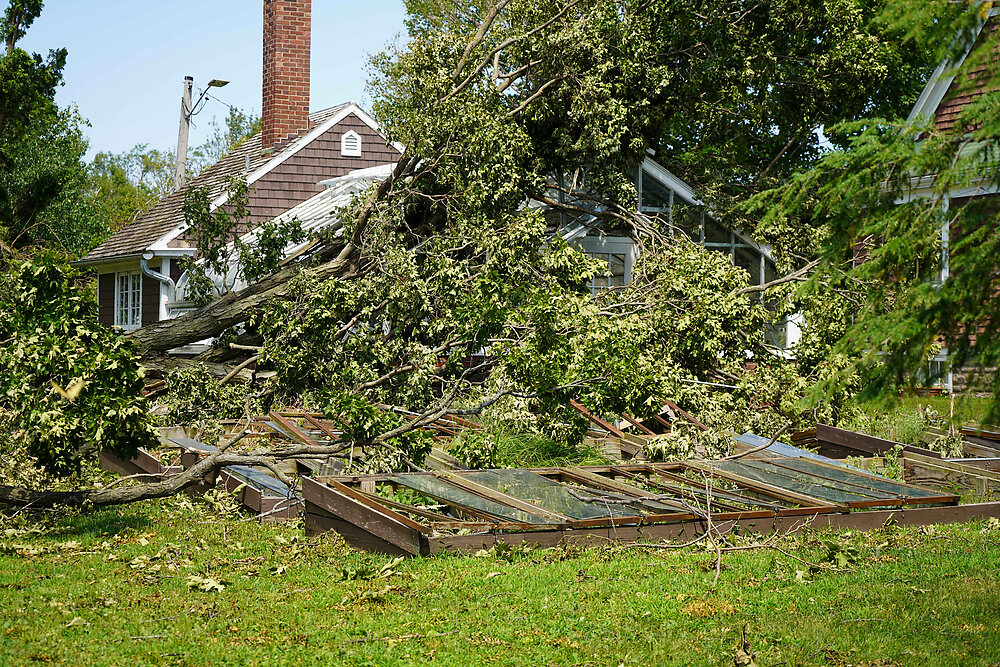
Storm Recovery
Unfortunately, a derecho storm swept through Cedar Rapids in 2020. It destroyed more than 70% of the mature tree canopy, including more than 50 century-old trees. The gardens will be cultivated as usual, however, many of the historical landscape features will have to be restored—a process that will take years. Learn more about the storm and the recovery and restoration process.
Gardens & Grounds
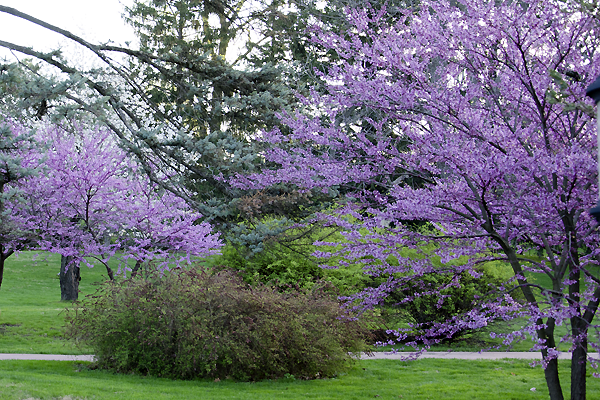
A large shrub or small tree native to Iowa, the red bud grows 20 to 30 feet tall with a 25 to 35 foot spread. The dark bark accentuates showy pink flowers that emerge prior to leafing in early spring. Red bud trees have strong horizontal branching habits reminiscent of the Midwest horizon. Prairie landscape architects like O.C. Simonds preferred native trees in their designs, often selecting the red bud for its unique growing habit, color during spring and fall, and their shape during winter.
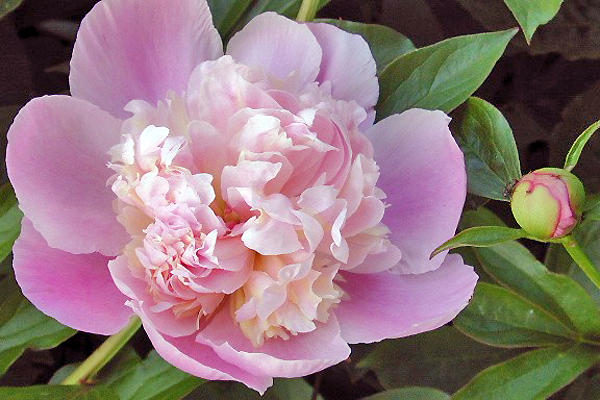
A favorite flower of Irene Douglas and Margaret Douglas Hall, peonies were part of the original Formal Garden design in 1910. As the landscape evolved, peonies were added to other areas of the estate, including along the driveway from the Lord & Burnham Greenhouse to the mansion. From late spring to early summer, the peonies bloom into red, white, and pink flowers.
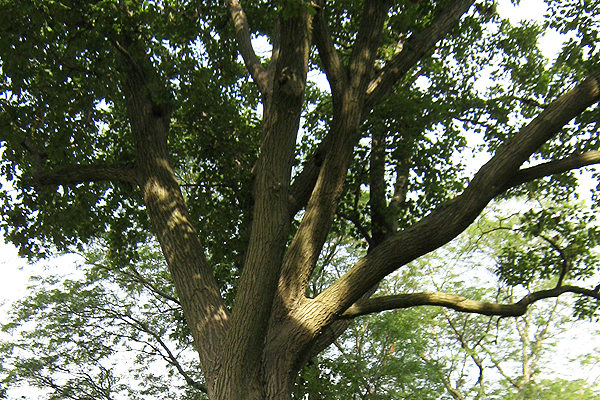
This red oak is one of the oldest trees on the estate and was growing here during the Civil War (1861-1865). When Caroline Sinclair purchased the land, the tree stood a few inches inside the southern property line. Later, as the Douglas family began transforming the property into a country estate, landscape architect O.C. Simonds designed the main drive to curve around the tree. This tree fell during the 2020 derecho storm but the stump has been saved to remind visitors of this majestic oak.
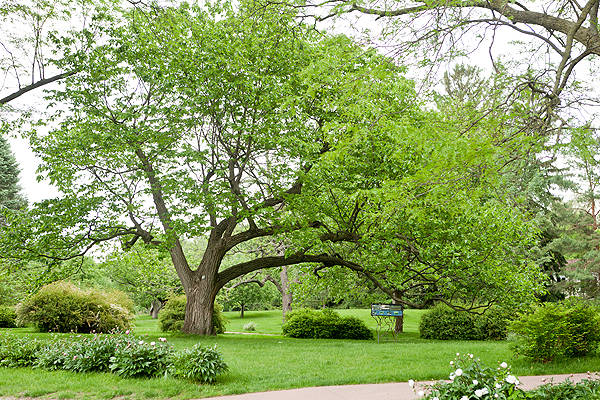
Chinese Chestnuts were first introduced to America in 1903. Planted either by the Sinclairs or the Douglases, this Chinese Chestnut is located where both families planted their orchard. The tree’s apparent age, estimated from the trunk diameter, height, and spread of the branches, suggest it is likely one of the oldest Chinese Chestnuts in Iowa, if not the nation. Approximately 50 foot tall and 50 foot wide, this low branching, wide spreading habitat makes a great shade tree.
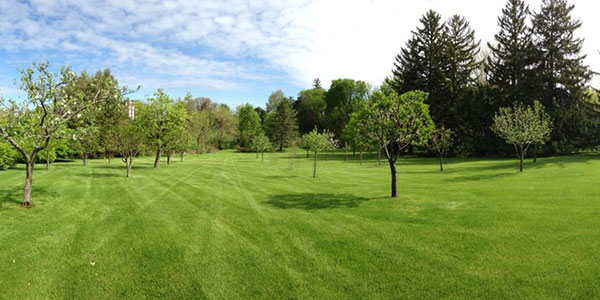
All three of Brucemore’s families maintained an extensive orchard of fruit and nut trees. Brucemore’s original orchard was planted by the Sinclair family slightly north of its current location. The orchard was moved to its current location in the 1940s following a devastating frost. Brucemore’s horticulture staff continue to cultivate varieties of semi-dwarf apple, cherry, and pear trees that were found in the Douglas Orchard.
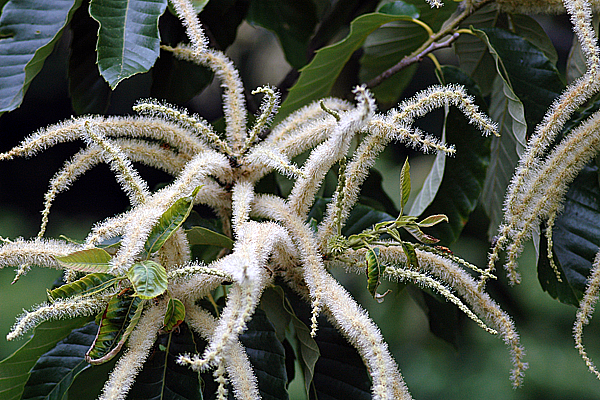
When in bloom, the canopy of the Chinese chestnut is covered in clusters of long chenille-like tendrils resembling spider legs. The flowers produce an unmistakable earthy and spicy aroma. By fall, edible chestnuts have formed inside spiny green burrs, ready to be harvested.